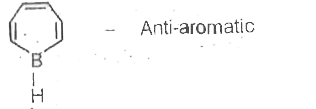Choose the incorrect match
Axile placentation - China rose
Free central placentation - Dianthus
Polyadelphous stamens - Citrus
Tetradynamous condition of staments - Pea
The correct Answer is:D
To solve the question "Choose the incorrect match," we will analyze each option provided in the question and determine whether the matches are correct or incorrect.
1. Exile Plantation and China Rose:
- Exile plantation refers to a type of placentation where ovules are born at or around the center of a compound ovary.
- In the case of China Rose (Hibiscus rosa-sinensis), it is known for having a different type of placentation, specifically axile placentation.
- Conclusion: This match is incorrect.
2. Free Central Placentation and Dianthus:
- Free central placentation is characterized by ovules developing in a central column without the presence of septa.
- Dianthus (carnation) is indeed known to exhibit free central placentation.
- Conclusion: This match is correct.
3. Poly Adolphous Stamen and Citrus:
- Poly Adolphous Stamen refers to stamens that unite by their anthers into three or more groups.
- Citrus plants do not exhibit polyadelphous stamens; they typically have a different arrangement.
- Conclusion: This match is incorrect.
4. Tetradynamous Condition of Stamen and Brassica:
- Tetradynamous condition refers to a specific arrangement of stamens, where there are six stamens, four of which are longer than the other two.
- Brassica (mustard) is a classic example of a plant exhibiting this condition.
- Conclusion: This match is correct.
Final Answer:
The incorrect matches are:
- Exile Plantation with China Rose
- Poly Adolphous Stamen with Citrus
- Exile plantation refers to a type of placentation where ovules are born at or around the center of a compound ovary.
- In the case of China Rose (Hibiscus rosa-sinensis), it is known for having a different type of placentation, specifically axile placentation.
- Conclusion: This match is incorrect.
- Free central placentation is characterized by ovules developing in a central column without the presence of septa.
- Dianthus (carnation) is indeed known to exhibit free central placentation.
- Conclusion: This match is correct.
- Poly Adolphous Stamen refers to stamens that unite by their anthers into three or more groups.
- Citrus plants do not exhibit polyadelphous stamens; they typically have a different arrangement.
- Conclusion: This match is incorrect.
- Tetradynamous condition refers to a specific arrangement of stamens, where there are six stamens, four of which are longer than the other two.
- Brassica (mustard) is a classic example of a plant exhibiting this condition.
- Conclusion: This match is correct.
The incorrect matches are:
- Exile Plantation with China Rose
- Poly Adolphous Stamen with Citrus
Topper's Solved these Questions
Similar Questions
Knowledge Check
Choose the correct match/matches
A18 ml of H2O at 4∘C−NA molecule of H2OB11.2 L of CO2 at - NA2 molecule of CO2273∘C and 1 atmC56 g of Fe57−NA atomD5.6 L of CH4 at STP - 4 g weightThe incorrect match is
A B
B C
C D
D
Choose incorrect match pair form given pairs
Aanthocephalus - inter petiolar stipulesBlathyrus - foliaceous stiplusesCpolygonum - ochraceate stipluesDacacia - tendrillar stipules
Choose incorrect match w.r.t. different classes of fungi
View SolutionChoose the incorrect pair from the matches given below.
View SolutionChoose incorrect match amongst restriction enzymes listed in column l and type of ends produced in column ll
View SolutionIncorrect match is
View SolutionIncorrect match is
View Solution
